Cornell Mathematics Sesquicentenial Historical Notes. Chapter IV: Research before World War II
Mathematical research at Cornell, 1868-1895
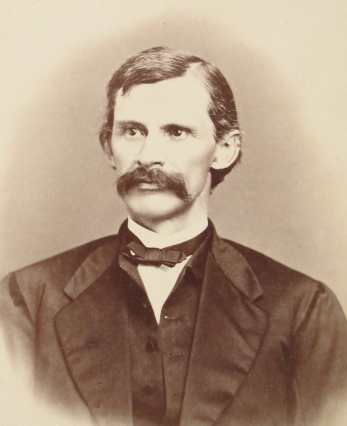
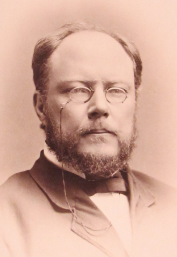

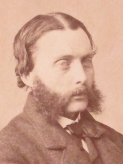
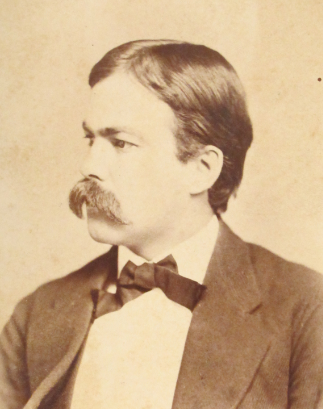
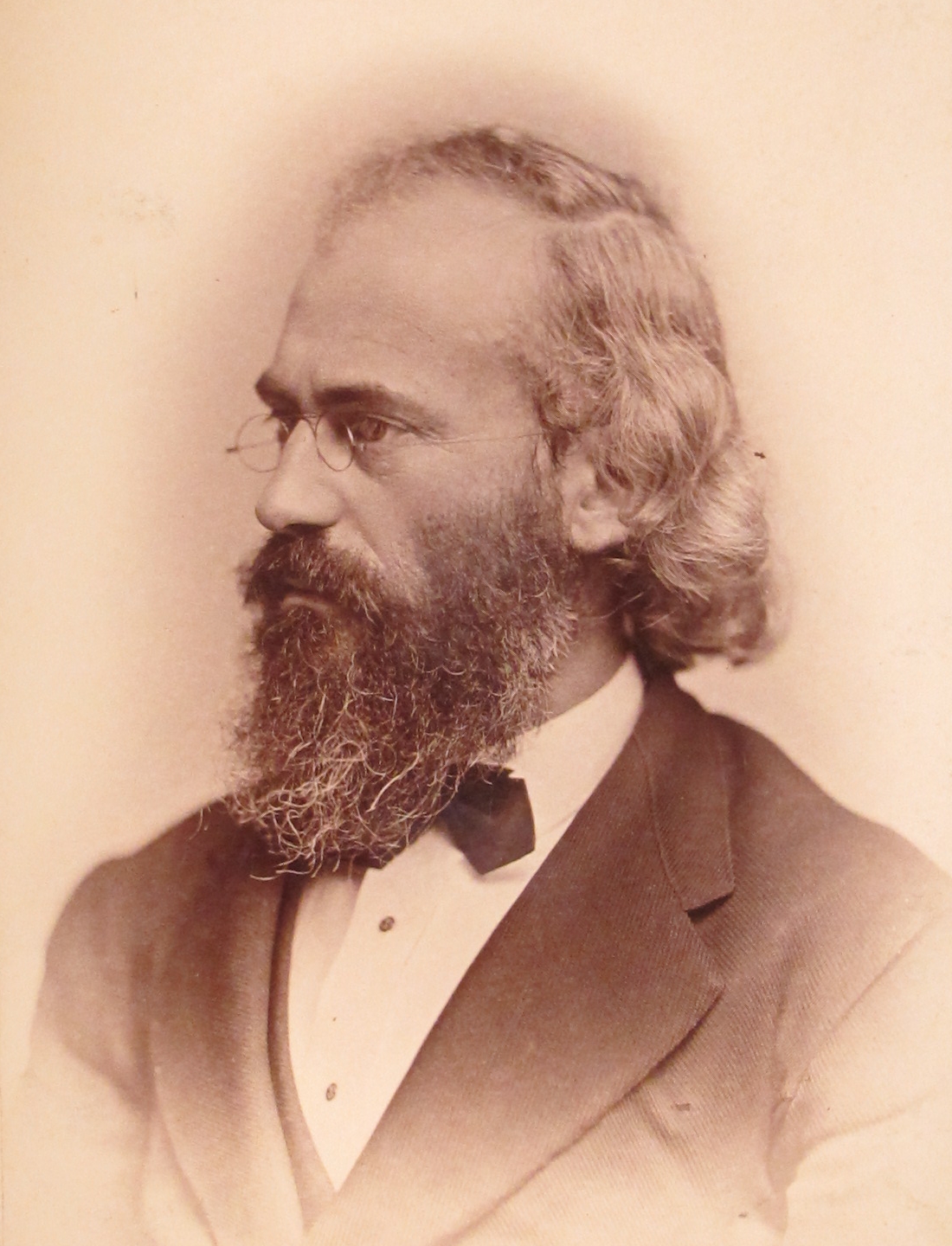

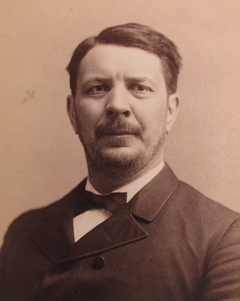


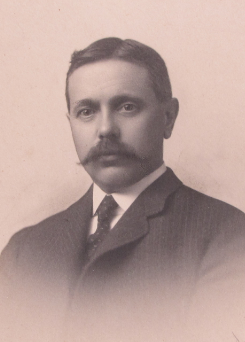
Professors and Assistant Professors before 1895: E.W. Evans (1867-74), Z.H. Potter (1868-1882), Major W.E. Arnold (1869-76), H.T. Eddy (1869-73), W.J. Hamilton (1869-70-no picture), L.A. Wait (1870-1910), J.E. Oliver (1871-95), W.E. Byerly (1873-76), G.W. Jones (1876-1907), J. McMahon (1883-1920), A.S. Hathaway (1885-91) J.H. Tanner (1891-1926).
Among these faculty, only W.E. Byerly had a Ph.D. when he arrived at Cornell. Byerly, the first Harvard mathematics Ph.D., was an outstanding educator. After leaving Cornell in 1876, he shaped large parts of the mathematics curriculum at Harvard. He wrote influential advanced text books and two mathematics articles. H.T. Eddy received his Ph.D. at Cornell in 1872 and left in 1873, and was replaced by Byerly. He wrote significant technical books on applied mathematics and the following research articles:
- On the Two General Reciprocal Methods in Graphical Statics. Amer. J. Math. 1 (1878), no. 4, 322–335.
- The Elastic Arch. Amer. J. Math. 1 (1878), no. 3, 241–244.
- The Theorem of Three Moments. Amer. J. Math. 1 (1878), no. 1, 27–31.
- On the Lateral Deviation of Spherical Projectiles. Amer. J. Math. 2 (1879), no. 1, 85–88.
J. McMahon received an honorary doctorate from his Alma Mater in Dublin, Ireland in 1918. J.H. Tanner, a brilliant Cornell undergraduate student who studied at Göttingen, received a Ph.D. from New Hampshire College in 1901 while teaching at Cornell. Of all these men, four appear to have contributed to the mathematical research of their time. They are Henry Turner Eddy, James Edward Oliver, James McMahon and Arthur Stafford Hathaway.
James Edward Oliver was viewed by his contemporaries as a talented and respected mathematician who wrote little, even by the standard of his time, but who had a wide knowledge and very diverse interests . His research output includes the following articles (more are mentioned in his NAS obituary):
- Note on Query concerning a Ball held in a Jet of Water: The Analyst, vol. i, 1874.
- On the Law of Distribution for Certain Plant Numbers: Proc. Am. Ass. Adv. Sci., vol. xxxi, 1882.
- A Method of Finding the Law of Linear Elasticity in a Metal: Ibid.
- A projective relation among infinitesimal elements. Ann. of Math. 1 (1884), no. 2, 40–41.
- On the general linear differential equation. Ann. of Math. 3 (1887), no. 4, 109–111.
Oliver main legacy lies in the successful development of the Cornell mathematics department which is in large part the result of his work and his vision. Oliver was the first to mentor students towards research and advanced mathematics studies at Cornell.
To obtain a better picture of the activities of the department before 1895, we add to the Professors listed above the following instructors and students who pursued an academic career in mathematics. John Burkitt Webb was Professor of Applied Mathematics and Theoretical Mechanics in the department of Mechanical Engineering and the Mechanics Arts from 1880 to 1885. Daniel Alexander Murray, Ph.D., served as an instructor in mathematics between 1894 and 1901. Edward Wyllys Hyde, Charles Ambrose Van Velzer, George Egbert Fisher, were undergraduate students before 1895.
E. W. Hyde studied Civil Engineering at Cornell and became Professor of Mathematics at the University of Cincinnati where he also served as President, following in the steps of H.T. Eddy who also served as Professor of Mathematics and President at the University of Cincinnati. Hyde published articles such as
- Centre of Gravity of Surface and Solid of Revolution. Amer. J. Math. 3 (1880), no. 4, 329–331.
- The directional theory of screws. Ann. of Math. 4 (1888), no. 5, 137–155.
- On a surface of the sixth order which is touched by the axes of all screws reciprocal to three given screws. Ann. of Math. (2) 2 (1900/01), no. 1-4, 179–188.
Around 1880, after undergraduate studies in mathematics at Cornell, Arthur Hathaway and Charles van Velzer both worked under J.J. Sylvester at Johns Hopkins. Neither of then received a doctorate from Johns Hopkins. Van Velzer joined the University of Wisconsin were he served as Chair, wrote text books, and supervised the first two mathematics Ph.D.s. of that institution. His own research output is limited to one article, "Compound Determinants", Amer. J. Math. 6 (1883/84), no. 1-4, 164–172. Early during his stay in Baltimore, Hathaway's wife and their son named Edward Oliver died in childbirth. Although he wrote two articles in number theory based on his work done at Johns Hopkins, Hathaway returned to Cornell as Assistant Professor in 1885 without a doctorate. In 1891, he left Cornell to become Professor of Mathematics at Rose Polytechnic Institute were he stayed for the rest of his career. Hathaway was very well regarded by his Cornell's teachers. Here is the list of his research publications:
- Some Papers on the Theory of Numbers. Amer. J. Math. 6 (1883/84), no. 1-4, 316–330.
- A Memoir in the Theory of Numbers. Amer. J. Math. 9 (1887), no. 2, 162–179.
- Quaternions as numbers of four-dimensional space. Bull. Amer. Math. Soc. 4 (1897), no. 2, 54–57.
- Quaternion space. Trans. Amer. Math. Soc. 3 (1902), no. 1, 46–59.
- Anharmonic groups. Ann. of Math. (2) 27 (1926), no. 4, 357–372.
Before 1895, seven graduate students obtained a Master or a Ph.D. in Mathematics: Hiram John Messenger, Arthur Rollin Harris, Cadwallader Edwards Linthicum, Anna Helene Palmie, Ida Metcalf , Anna Louisa MacKinnon and Agnes Sime Baxter. We know nothing of Linthicum except the title of his dissertation "On the Rectification of Certain Curves, and Certain Series Involved". Messenger, Palmie, Metcalf, MacKinnon and Baxter were students of Oliver. Of these people, only A. R. Harris published beyond his thesis. He was an outstanding student at Cornell and an outstanding mathematician and scientist. It seems quite likely that he was a student of James McMahon. Since he is the first Cornell students to have published extensively, the list of his articles in mathematical journals is recorded here (most of his work was on tidal theory and published elsewhere):
- The theory of images in the representation of functions. Ann. of Math. 4 (1888)
- On the expansion of snx. Ann. of Math. 4 (1888), no. 3, 87–90.
- Note on the theory of images. Ann. of Math. 4 (1888), no. 4, 128.
- On the invariant criteria for the reality of the roots of the quintic. Ann. of Math. 5 (1891), no. 6, 217–228.
- Note on isogonal transformation; particularly on obtaining certain systems of curves which occur in the statics of polynomials. Ann. of Math. 6 (1892), no. 4, 77–80.
- Note on the Use of Supplementary Curves in Isogonal Transformation. Amer. J. Math. 14 (1892), no. 4, 291–300.
- On two-dimensional fluid motion through spouts composed of two plane walls. Ann. of Math. (2) 2 (1900/01), no. 1-4, 73–76.
- On Harmonic Functions. Amer. J. Math. 34 (1912), no. 4, 391–420.
Paul Louis Saurel was a graduate student and served as the first secretary of the Cornell Mathematical Club instituted by J. Oliver at Cornell after his return from Göttingen in 1890. Later, Saurel obtained his Ph.D. in Bordeaux, France, under Pierre Duhem, and he spent his career at the College of the City of New York. Duhem and, to some extend, Saurel were actors in the the early history of modern thermodynamics. Saurel wrote over fifteen research articles including
- Note on integrating factors. Bull. Amer. Math. Soc. 4 (1898), no. 7, 329–331.
- On functional determinants. Ann. of Math. (2) 8 (1907), no. 2, 73–76.
- On the torsion of a curve. Ann. of Math. (2) 9 (1908), no. 3, 144–148.
- On the Thermodynamics of Black Radiation. Phys. Rev. (Series I) 30 (1910), 350
- On the classification of crystals. Bull. Amer. Math. Soc. 17 (1911), no. 8, 398–409.
The best trained and most able mathematicians among Cornell faculty of this early period is James McMahon whose work was mostly in Applied Mathematics and Mathematical Physics. He was praised at Cornell for the help he provided colleagues of other departments regarding problems in Statistics, Physics and Electrical Engineering. His list of mathematics articles published before 1900 includes
- On a property of an imaginary line passing through one of the circular points at infinity. Ann. of Math. 4 (1888), no. 3, 91.
- On the expression for the Hessian of a binary quantic in terms of the roots. Ann. of Math. 5 (1889), no. 1, 17–18.
- On the descending series for Bessel's functions of both kinds. Ann. of Math. 8 (1893/94), no. 1-6, 57–61.
- On the roots of the Bessel and certain related functions. Ann. of Math. 9 (1894/95), no. 1-6, 23–30.
- On the general term in the reversion of series. Bull. Amer. Math. Soc. 3 (1894), no. 7, 170–172.
- Notes on the expression for a velocity-potential in terms of functions of Laplace and Bessel. Bull. Amer. Math. Soc. 2 (1896), no. 6, 173–177.
Mathematical research at Cornell, 1895-1915
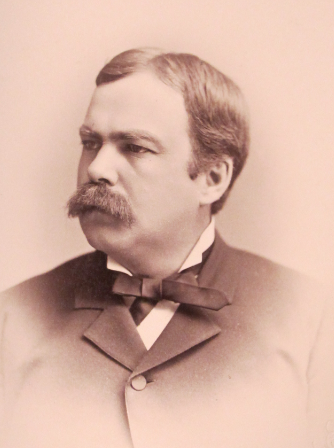






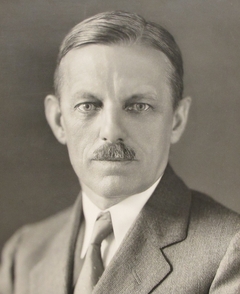
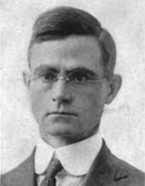

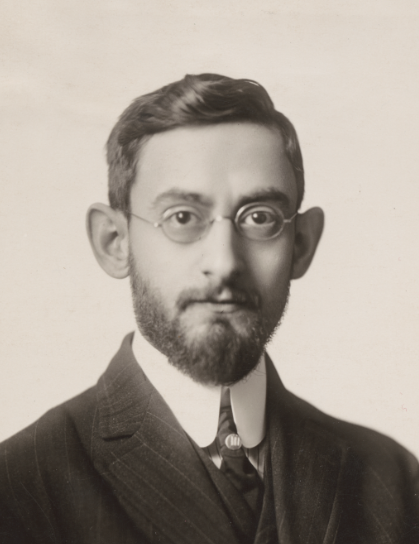
Professors and future Professors who arrived before 1915: L.A. Wait (1870-1910), G.W. Jones (1876-1907), J. McMahon (1883-1920), J.H. Tanner (1891-1926), J.I. Hutchinson (1894-1935), V. Snyder (1895-1938), A. Ranum (1906-1934), W.B. Carver (1906-1948), D.C. Gillespie (1906-1935), F.R. Sharpe (1907-1938), W.A. Hurwitz (1910-1954).
Other faculty include George A. Miller, instructor between 1897 and 1901; Benjamin Fite, Ph.D. student of Miller, instructor and Assistant Professor (1902-1911), later Professor at Columbia; F. Owens and Clyde F. Craig, Assistant Professors who left in 1926 and 1933 without having been promoted. Owens became Chair at Pennsylvania State University.
After James Oliver death (and that of Ernst Ritter), the research and graduate activity diminished markedly for a few years and the Mathematical Club stopped functioning. Instructor George Miller, famous for his work on finite groups, arrived in 1897 and must have served as a catalyst in the resurgence of scholarly activities (after all, Miller is known for having written over 800 articles during his career!). By 1898, the Mathematical Club was reborn under the name "The Oliver Club" and by 1901, the first post-Oliver doctorate was awarded to W. B. Fite, a student of Miller who later became Professor at Columbia University.
The eighth American Mathematical Society Summer Meeting gathered in Ithaca August 19-24 1901, with Colloquium lectures by O. Bolza and E.W. Brown.
By 1902, Miller had left for Stanford (but not before supervising two other students including H.L. Rietz) and V. Snyder had started his long career as one of the most prolific graduate advisors that the department has ever had (only A. Nerode and L. Gross have had more students). His first two students were P. Field (later Professor at Michigan University) and C.L.E. Moore, of MIT fame. Snyder, a student of Klein, pursued the classification and study of various classes of algebraic varieties.
Twenty four Cornell mathematics graduate students received a Ph.D. between 1900 and 1915. W. Fite, C.L.E.Moore and H.L. Rietz have already been mentioned. Rietz would become the first President of the Institute for Mathematical Statistics. He spoke at the 1924 International Congress of Mathematicians (Toronto). Charles Sisam, a student of Snyder, spoke at two International Congresses in 1924 and 1928. Other notable students include Francis Sharpe who stayed at Cornell, Robert Burgess who served as Director of the U.S. Census Bureau, Helen Owens who was the first women to served as faculty instructor at Cornell and Anna Helen Tappan who taught at Iowa State University and the Western College for Women in Oxford, Ohio, where she was Professor, Head of mathematics, and served as Dean.
McMahon, Hutchinson and Snyder were the research leaders of the department during this decade. McMahon continued his work on mathematical physics. In his 1902 address to the American Association for the Advancement of Science, McMahon spoke of several applications of mathematics to physical problems, one of which was the work of A.R. Harris on tidal theory.
Hutchinson had been trained at Clark and Chicago under O. Bolza in the theory of functions. He is known, in particular, for his contribution to the study of the zeros of the Riemann zeta function. One of the best Cornell mathematicians of the first half of the twentieth century, he suffered from a nervous breakdown when serving as Chair in 1912 but recovered and served as Chair again 1919-20.
The fourteenth Summer Meeting of the American Mathematical Society was held at Cornell, September 5-6 1907.
Four long-term members of the department arrived in 1906-07. Arthur Ranum had studied at Cornell before embarking on an academic journey that took him to the University of Chicago (graduate student), the University of Washington (Professor of Mathematics and Astronomy), The university of Wisconsin and Stanford (Instructor) where he worked with G. Miller. In 1906, he received his doctorate from the University of Chicago under the supervision of E. Dickson. David Gillespie, an analyst, obtained his doctorate at Göttingen under D. Hilbert in 1906 and joined Cornell the same year. Walter Carver, an algebraic geometer, obtained his Ph.D. at Johns Hopkins under Frank Morley in 1904 and joined Cornell in 1906. He dedicated his career to education. Francis Sharpe, an englishman educted at Cambridge, obtained his Ph.D. at Cornell in 1907 under J. McMahon. He retained an interest for Mathematical Physics for his entire career but became one of the main collaborators of V. Snyder.
Wallie Hurwitz obtained his Ph.D. at Göttingen under D. Hilbert in 1910 and joined Cornell the same year. He is best known for his work on summability methods. He became the second most prolific graduate advisor of the department during the pre-World-War-II period, behind V. Snyder.
Groups and group theory are ubiquitous in the interests Cornell mathematics faculty during this period. Alebgraic geometry is the most active subject in the department under the leadership of V. Snyder and Francis Sharpe. The theory of functions (automorphic functions) is another area of focus lead by John Hutchinson. Sharpe and McMahon lead activities in mathematical physics and applied mathematics. Hilbert's students Gillespie and Hurwitz represented the area of analysis. Here are some of the main articles published by members of the department:
- Miller, G. A.; On the Primitive Substitution Groups of Degree Sixteen. Amer. J. Math. 20 (1898), no. 3, 229–241.
- Miller, G. A.; On the commutator groups. Bull. Amer. Math. Soc. 4 (1898), no. 4, 135–139.
- Fite, W. B.; Concerning the commutator subgroups of groups whose orders are powers of primes. Bull. Amer. Math. Soc. 9 (1902), no. 3, 139–141.
- Fite, William Benjamin; Irreducible homogeneous linear groups in an arbitrary domain. Trans. Amer. Math. Soc. 10 (1909), no. 3, 315–318.
- Craig, Clyde Firman; On a class of hyper-Fuchsian functions. Trans. Amer. Math. Soc. 11 (1910), no. 1, 37–54.
- Sharpe, F. R.; Craig, C. F.; An application of Severi's theory of a basis to the Kummer and Weddle surfaces. Trans. Amer. Math. Soc. 15 (1914), no. 3, 236–244.
- Sharpe, Francis Robert; On the stability of the motion of a viscous liquid. Trans. Amer. Math. Soc. 6 (1905), no. 4, 496–503.
- Sharpe, F. R.; Snyder, Virgil; Birational transformations of certain quartic surfaces. Trans. Amer. Math. Soc. 15 (1914), no. 3, 266–276.
- Snyder, Virgil; Sharpe, F. R.; Certain quartic surfaces belonging to infinite discontinuous Cremonian groups. Trans. Amer. Math. Soc. 16 (1915), no. 1, 62–70.
- Snyder, Virgil; On Some Invariant Scrolls in Collineations which Leave a Group of Five Points Invariant. Amer. J. Math. 22 (1900), no. 3, 253–258.
- Snyder, Virgil; On the Forms of Unicursal Sextic Scrolls. Amer. J. Math. 25 (1903), no. 1, 59–84.
- Snyder, Virgil; An application of a (1,2) quaternary correspondence to the Weddle and Kummer surfaces. Trans. Amer. Math. Soc. 12 (1911), no. 3, 354–366.
- Snyder, Virgil; Algebraic surfaces invariant under an infinite discontinuous group of birational transformations. I. Trans. Amer. Math. Soc. 14 (1913), no. 1, 105–108.
- Hutchinson, J. I.; On some birational transformations of the Kummer surface into itself. Bull. Amer. Math. Soc. 7 (1901), no. 5, 211–217.
- Hutchinson, J. I.; On a class of automorphic functions. Trans. Amer. Math. Soc. 3 (1902), no. 1, 1–11.
- Hutchinson, J. I.; A method for constructing the fundamental region of a discontinuous group of linear transformations. Trans. Amer. Math. Soc. 8 (1907), no. 2, 261–269.
- McMahon, James; On the use of n-fold Riemann spaces in applied mathematics. Bull. Amer. Math. Soc. 15 (1909), no. 10, 486–492.
- Ranum, Arthur; The group of classes of congruent matrices with application to the group of isomorphisms of any abelian group. Trans. Amer. Math. Soc. 8 (1907), no. 1, 71–91.
- Ranum, Arthur; On the Principle of Duality in the Geometry of the Sphere. Amer. J. Math. 34 (1912), no. 1, 31–46.
- Gillespie, D. C.; On the construction of an integral of Lagrange's equations in the calculus of variations. Bull. Amer. Math. Soc. 13 (1907), no. 7, 345–348.
- Gillespie, D. C.; Definite integrals containing a parameter. Bull. Amer. Math. Soc. 18 (1912), no. 8, 379–384.
- Carver, W. B.; Associated configurations of the Cayley-Veronese class. Bull. Amer. Math. Soc. 13 (1906), no. 3, 109–111.
- Hurwitz, Wallie Abraham; Note on certain iterated and multiple integrals. Ann. of Math. (2) 9 (1908), no. 4, 183–192.
- Hurwitz, Wallie Abraham; On the pseudo-resolvent to the kernel of an integral equation. Trans. Amer. Math. Soc. 13 (1912), no. 4, 405–418.
- Hurwitz, Wallie Abraham; Postulate-sets for abelian groups and fields. Ann. of Math. (2) 15 (1913/14), no. 1-4, 93–100.
Mathematical research at Cornell, 1915-1925

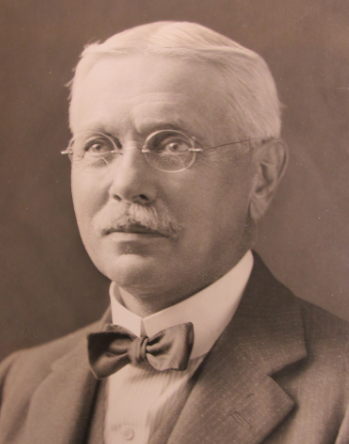
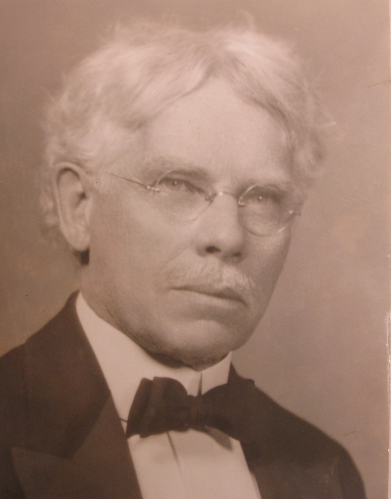
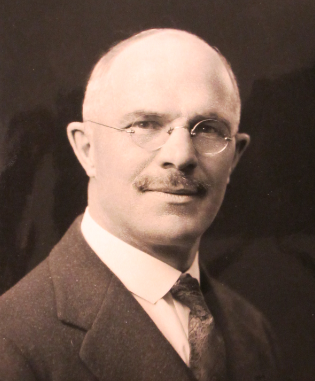


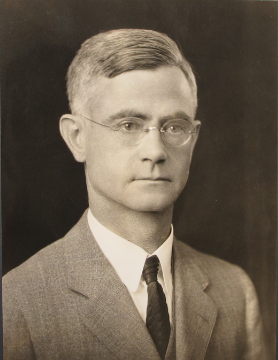
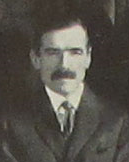
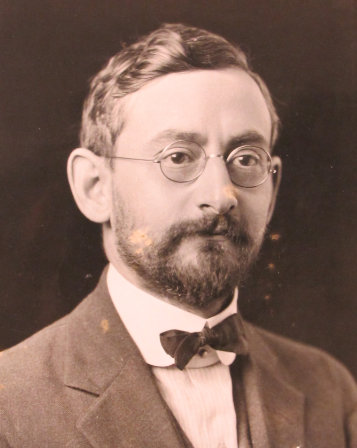
Professors during the period 1915-1925: J. McMahon (1883-1920), J.H. Tanner (1891-1926), J.I. Hutchinson (1894-1935), V. Snyder (1895-1938), A. Ranum (1906-1934), W.B. Carver (1906-1948), D.C. Gillespie (1906-1935), F.R. Sharpe (1907-1938), W.A. Hurwitz (1910-1954).

The period 1915-1925 is a "golden age" for mathematics at Cornell. The group of core faculty does not evolve during these years but a string of outstanding mathematicians are passing through, contributing to the scientific life of the department. They are Louis Lazarus Silverman, Harry Vandiver, William Lloyd Garrison Williams and, last but not least, Marston Morse. Each of them was, at least once, an invited speaker at the International Congress of Mathematicians. Vandiver and Morse became members of the National Academy of Sciences. Williams' name is attached to one of the most prestigious research prize awarded by the Canadian Mathematical Society. Pictured right are L.L. Silverman and W.A. Hurwitz who collaborated and made significant contributions to the theory of summability methods. Both where star students at the University of Missouri, Hurwitz as an undergraduate, Silverman as a graduate student who earned the first mathematics Ph.D. awarded at Missouri.
Forteen Ph.D. were awarded by the department during this decade. Five to students of V. Snyder, five to students of Hurwitz, two to students of Hutchinson, one to a student of Ranum and one to Elbert Frank Cox, thet first African American to earned a Mathematics Ph.D. and a student of W.L.G. Williams.
The most notable research publications from the faculty during this period are:
- Hurwitz, Wallie Abraham; Silverman, L. L.; On the consistency and equivalence of certain definitions of summability. Trans. Amer. Math. Soc. 18 (1917), no. 1, 1–20.
- Snyder, Virgil; Sharpe, F. R.; Space involutions defined by a web of quadrics. Trans. Amer. Math. Soc. 19 (1918), no. 3, 275–290.
- Snyder, Virgil; Sharpe, F. R.; The construction of algebraic correspondences between two algebraic curves. Trans. Amer. Math. Soc. 22 (1921), no. 1, 31–40.
- Snyder, Virgil; Problems in involutorial transformations of space. Bull. Amer. Math. Soc. 30 (1924), no. 3-4, 101–124.
- McMahon, James; Hyperspherical Geometry; and its Application to Correlation Theory for N Variables, 15 Biometrika 173–208 (1923).
- Gillespie, D. C.; A property of continuity. Bull. Amer. Math. Soc. 28 (1922), no. 5, 245–250.
- Hurwitz, Wallie Abraham; An expansion theorem for a system of linear differential equations of the first order. Trans. Amer. Math. Soc. 22 (1921), no. 4, 526–543.
- Carver, Walter B.; Systems of linear inequalities. Ann. of Math. (2) 23 (1922), no. 3, 212–220.
- Ranum, Arthur; On the Projective Differential Classification of N-Dimensional Spreads Generated by ∞1 Flats. Amer. J. Math. 37 (1915), no. 2, 117–158.
- Ranum, Arthur; On the differential geometry of ruled surfaces in 4-space and cyclic surfaces in 3-space. Trans. Amer. Math. Soc. 16 (1915), no. 1, 89–110.
- Hutchinson, J. I.; On a remarkable class of entire functions. Trans. Amer. Math. Soc. 25 (1923), no. 3, 325–332.
- Hutchinson, J. I.; On the roots of the Riemann zeta function. Trans. Amer. Math. Soc. 27 (1925), no. 1, 49–60.
- Vandiver, H. S.; On Kummer's memoir of 1857 concerning Fermat's last theorem. Bull. Amer. Math. Soc. 28 (1922), no. 8, 400–407.
- Vandiver, H. S.; A new type of criteria for the first case of Fermat's last theorem. Ann. of Math. (2) 26 (1924), no. 1-2, 88–94.
- Vandiver, H. S.; Methods for finding factors of large integers. Bull. Amer. Math. Soc. 30 (1924), no. 9-10, 542–553.
- Williams, W. L. G.; Fundamental systems of formal modular seminvariants [semi-invariants] of the binary cubic. Trans. Amer. Math. Soc. 22 (1921), no. 1, 56–79.
- Morse, Harold Marston; Recurrent geodesics on a surface of negative curvature. Trans. Amer. Math. Soc. 22 (1921), no. 1, 84–100.
- Morse, Harold Marston; A fundamental class of geodesics on any closed surface of genus greater than one. Trans. Amer. Math. Soc. 26 (1924), no. 1, 25–60.
- Morse, Marston; Relations between the critical points of a real function of n independent variables. Trans. Amer. Math. Soc. 27 (1925), no. 3, 345–396.
The last publication on the list is the first paper developing the key ideas of what would become to be known as Morse Theory.
The Thirty-First Summer Meeting of The American Mathematical Society was held at Cornell University, Ithaca, N.Y., from Tuesday to Saturday, September 8-12, 1925. It included Colloquium Lectures by Professors Eisenhart and Jackson.
Mathematical research at Cornell, 1925-1935






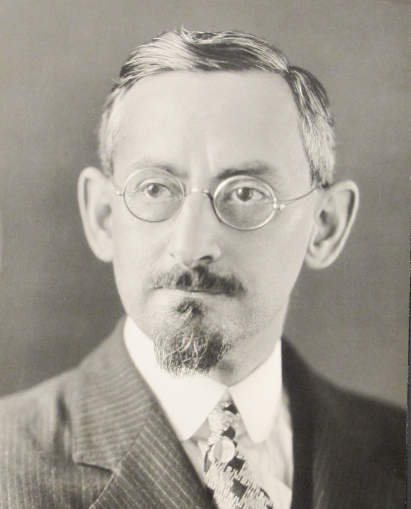
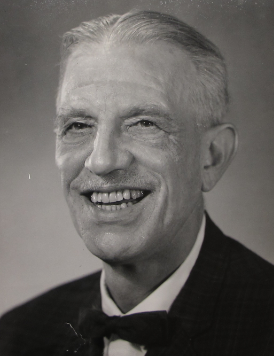
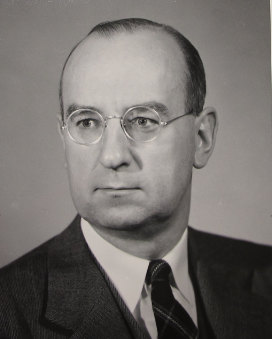
Professors and future Professors who arrived before 1935: J.I. Hutchinson (1894-1935), V. Snyder (1895-1938), A. Ranum (1906-1934), W.B. Carver (1906-1948), D.C. Gillespie (1906-1935), F.R. Sharpe (1907-1938), W.A. Hurwitz (1910-1954), Ralph Agnew (1932-1968), Robert Walker (1935-1974).
Virgil Snyder served as the 19th president of the American Mathematical Society in 1927-1928. He was an invited speaker at the International Congress of Mathematicians in 1928 (Bologna), 1932 (Zürich) and 1936 (Oslo). At each of these congress, one of Snyder's former students was also invited to speak, namely, Charles Sisam in Bologna, Temple Rice Hollcroft in Zürich and Charles Torrance in Oslo.
Seven assistant professors joined Cornell during this period. Charles Frederick Roos stayed only a short time and became a pioneer in the development of econometric. Burton Wadsworth Jones stayed until 1948, becoming Associate Professor before joining the University of Colorado, Boulder. He supervised several graduate students at Cornell including George Thomas (from Thomas Calculus), Mary Dolciani after whom the MAA headquarters in Washindton D.C. is named, and Irving Reiner. Ralph Agnew, Vivian Streeter Lawrence and John Adam Fitz Randolph, three Cornell Ph.D.s, joined the faculty. Lawrence and Randolph stayed for about ten years before pursuing their careers elsewhere. William Flexner and Robert Walker where the first two of a series of Princeton Ph.D.s who joined Cornell between 1934 and 1939. Flexner was a brilliant algebraic geometer who left in 1948. Only two of these people, Agnew and Walker, would become Full Professors at Cornell. Both served as Chair, Agnew from 1940 to 1950 and Walker from 1950 to 1960.
The most notable research publications from the faculty during this period are:
- Hutchinson, J. I. Properties of functions represented by the Dirichlet series ∑(aν+b)^{-s}, or by linear combinations of such series. Trans. Amer. Math. Soc. 31 (1929), no. 2, 322–344.
- Hutchinson, J. I.; Note on the number of linearly independent Dirichlet series that satisfy certain functional equations. Bull. Amer. Math. Soc. 37 (1931), no. 2, 63–64.
- Ranum, Arthur; Twisted curves classified as to their osculating and quasi-osculating spheres. Ann. of Math. (2) 29 (1927/28), no. 1-4, 445–458.
- Ranum, Arthur; The singular points of analytic space-curves. Trans. Amer. Math. Soc. 31 (1929), no. 1, 145–163
- Ranum, Arthur; Spheres osculating a curve and quasi-osculating another curve. Math. Ann. 101 (1929), no. 1, 147–160.
- Gillespie, D. C.; Hurwitz, W. A.; On sequences of continuous functions having continuous limits. Trans. Amer. Math. Soc. 32 (1930), no. 3, 527–543.
- Hurwitz, Wallie Abraham; The Oscillation of a Sequence. Amer. J. Math. 52 (1930), no. 3, 611–616.
- Sharpe, F. R.; Involutions of order n with an n−2 fold line and their mapping. Ann. of Math. (2) 31 (1930), no. 4, 637–640.
- Snyder, Virgil; The simplest involutorial transformation contained multiply in a line complex. Bull. Amer. Math. Soc. 36 (1930), no. 2, 89–93.
- Snyder, Virgil; On a series of involutorial Cremona transformations of space defined by a pencil of rules surfaces. Trans. Amer. Math. Soc. 35 (1933), no. 2, 341–347.
- Roos, C. F.; A general problem of minimizing an integral with discontinuous integrand. Trans. Amer. Math. Soc. 31 (1929), no. 1, 58–70.
- Roos, C. F.; The problem of depreciation in the calculus of variations. Bull. Amer. Math. Soc. 34 (1928), no. 2, 218–228.
- Agnew, Ralph Palmer; The behavior of bounds and oscillations of sequences of functions under regular transformations. Trans. Amer. Math. Soc. 32 (1930), no. 4, 669–708.
- Agnew, Ralph Palmer; On deferred Cesàro means. Ann. of Math. (2) 33 (1932), no. 3, 413–421.
- Agnew, Ralph Palmer; On Riesz and Cesàro methods of summability. Trans. Amer. Math. Soc. 35 (1933), no. 2, 532–548.
- Jones, Burton W. The regularity of a genus of positive ternary quadratic forms. Trans. Amer. Math. Soc. 33 (1931), no. 1, 111–124.
- Jones, Burton W.; On Selling's Method of Reduction for Positive Ternary Quadratic Forms. Amer. J. Math. 54 (1932), no. 1, 14–34.
- Jones, Burton W. The transformations effecting the reduction of positive quaternary quadratic forms. Ann. of Math. (2) 35 (1934), no. 3, 516–528.
- Randolph, John F. Carathéodory measure and a generalization of the Gauss-Green lemma. Trans. Amer. Math. Soc. 38 (1935), no. 3, 531–548.
- Flexner, William W.; The Intersection of Chains on a Topological Manifold. Amer. J. Math. 57 (1935), no. 2, 309–321.
Between 1934 and 1938, Ranum, Hutchinson and Gillespie died unexpectedly, and Sharpe and Snyder retired. This left only Carver and Hurwitz as Full Professors. J. Barkley Rosser joined the department in 1936 and good fortune brought Mark Kac to Cornell in 1939. Having added William Feller to its faculty at the end of World War II, the Cornell Mathematics Department embarked towards a new era, stronger than it had ever been before.